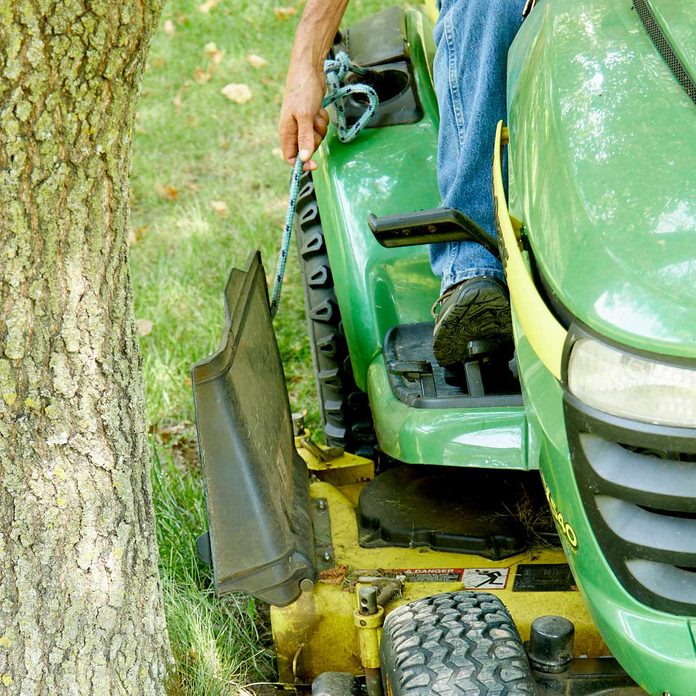Ten Handy Lawn Mowing Tips
Updated: May 08, 2020There are 'right' and 'wrong' ways to mow grass.

Lawn mowing tips: Don’t cut the grass too short
Every grass type has an optimal cutting height, and you’re better off on the high side of that height. Here are a few reasons. The grass blade is the food factory of the plant. Short blades just can’t generate as much food as long blades. Long blades also shade and cool the soil. That means weed seeds are less likely to sprout, and you won’t have to water as often because water won’t evaporate as fast. Not sure what type of grass you have? Take a sample to a garden center for identification.
Leave the clippings where they fall
Don’t capture the clippings in a bag; let them lie. They’ll release nutrients into the soil and form a mulch to help keep moisture in the soil. The only reason to capture the clippings is if you’ve waited too long to mow. Piles of clippings created from cutting long grass can smother the grass beneath.
Self-propelled mowers deliver an even cut
Pushing a lawn mower is great exercise, but if a finely manicured yard is more important than losing your beer belly, you’d be better off with a self-propelled model. Self-propelled mowers deliver a smoother cut because the cutting speed stays consistent, and all four wheels are more likely to stay on the ground when hitting a bump or going up hills.
Mow with sharp blades
Dull mower blades rip through the grass blades instead of slicing them cleanly, and that stresses the plant. You can always tell a lawn that’s been mowed with a dull blade because it looks brown on the top. Get on your hands and knees and you can actually see the damage.
Cut short before winter
Just this one time of the year, set your mower to cut 1-1/2 or 2 in. and mow your grass short. That’ll do a couple of things. First, it’ll lessen the likelihood of snow mold. And second, tall grass blades won’t lie down and smother the new grass next spring.
To avoid a lot of string trimmer work, I like to mow as close as possible to trees and buildings. But the grass chute on my riding mower prevents it. So I drilled a hole in the chute and tied a rope from the chute to a handle on the side of the tractor. Now I can lift up the chute without missing a beat, and cut way down on string trimmer work. — Travis Larson
Consider a zero-turn mower
Cut long grass twice
If you came back from a vacation and the neighbor kid neglected to mow your yard, don’t try and mow it down in one day. Cut off some of the length and then wait a couple days and mow again. This will cause less stress on the grass. You may need three passes depending on how long the grass grew.
Change the pattern
Mow in a different direction every time: front to back, back to front, diagonal, etc. Repeatedly lawn mowing the exact same way will cause the grass blades to grow at an angle, and you may develop permanent tracks from the mower wheels.
Don’t mow wet grass
Mowing wet grass can cause the mower wheels to leave ruts in your yard, and you could leave behind giant clumps of clippings that could smother the grass beneath. And the wet grass will carpet the underside of your mower deck with a thick mat.






